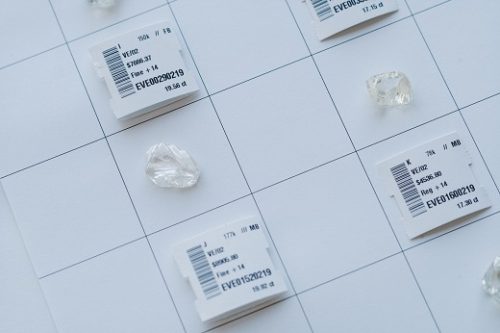
De Beers loosened its purchasing requirements for rough buyers at last week’s sight in an effort to ease the oversupply affecting the diamond market.
Sightholders have struggled to reduce their inventories due to an imbalance of stocks and weak polished demand. To tackle the problem, De Beers allowed its customers to defer purchases from the July sight to other sales later this year, a spokesperson confirmed Thursday.
De Beers’ long-term sales program compels customers to show certain levels of demand at sights, which take place 10 times a year in Botswana. They are free to push off buying one box per “band” (selection of goods) per half year, but only from one sight to the next. However, at last week’s sale, sightholders were able to make an extra deferral, and could also delay to later in the year, not just by one sight.
In addition, the company has brought forward sightholders’ annual opportunity to reschedule their purchases, known as “re-phasing.” This year, that will occur after the July sight, the sixth of the year, whereas it’s normally scheduled for the eighth sight.
De Beers’ revenue and profit fell in the first half, as a buildup of excess polished goods in the midstream and retail sectors hit rough demand, the company explained last week in its half-year earnings. A price reduction at the June sight helped sightholders deal with the weak profitability they are facing, De Beers chief financial officer Nimesh Patel told Rapaport News Thursday.
The miner also lowered its production forecast to 31 million carats for this year, compared with an earlier outlook of 31 million to 33 million carats, Patel noted. Output in 2018 was 35.3 million carats.
Holding back rough
The combination of lower production and prices, together with increased purchasing flexibility, should tackle the “short-term” crisis, Patel predicted. The company also experienced a “meaningful increase” in its own rough inventories during the first half because it held back rough, he said.
“We’ve clearly reacted in terms of price, so we’ve injected profitability back into goods,” the executive said. “Secondly, we’ve reacted in terms of production…. Alongside that, we’re working with our customers to offer them more flexibility in the way they purchase, so [we’ve introduced] re-sequencing of the timing of their purchases of goods through the course of the year, which is something that we’ve allowed [them] to do, and we’ve added to that additional referrals as well. All those things will see us through this difficult period.”
The problems come from within the diamond industry rather than from outside: Growth in global gross domestic product supports consumer demand for diamond jewelry in the long term, Patel said. The US retail market is increasing, while sales in China and India are also rising in local currencies, he observed.
However, weak fourth-quarter holiday sales in 2018 and shaky consumer demand in the first half has made it difficult for the industry to offload polished stocks to retailers, Patel said. Consumers’ shift away from lower-end shopping malls has forced some companies to close stores and liquidate their goods, he added. Furthermore, retailers’ increased reliance on consignment has raised inventory risks for the midstream, as failure to make a final sale often forces suppliers to resend jewelry items to a different client, or to dismantle and remanufacture the jewelry, he explained.
“That doesn’t help the midstream in terms of sell-through,” he noted.
Yet the near future is positive because the issues are “specific to the balance of stocks in the midstream and the downstream,” Patel argued. “It’s a function of that excess polished as it sits today…just working its way through the system. As that happens, we should see polished prices perform better [and] rough demand return.”
Source: DCLA




